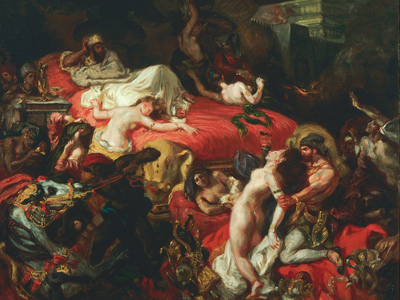
Romanticism
This quiz addresses the requirements of the National Curriculum KS3 in Art and Design for children aged 11 to 14 in years 7 to 9. Specifically this quiz is aimed at the section dealing with understanding art movements and their influence on the world, and it focusses in particular on the movement of Romanticism.
In KS3 children will learn how to critically appraise historical works of art, as well as understand the influence ancient movements have had on art today.
Romanticism, which was first defined around 1800, gathered momentum as an artistic movement in France and Britain in the early decades of the nineteenth century and was a mainstay until the middle of that century. The movement placed a great deal of emphasis on imagination and emotion, and many critics think Romanticism emerged as a response the Industrial Revolution, the aristocratic social and political norms of the Age of Enlightenment, and the scientific rationalisation of nature.
Ready for more?
not all...
quizzers. Try to win a coveted spot on our Hall of Fame Page.







